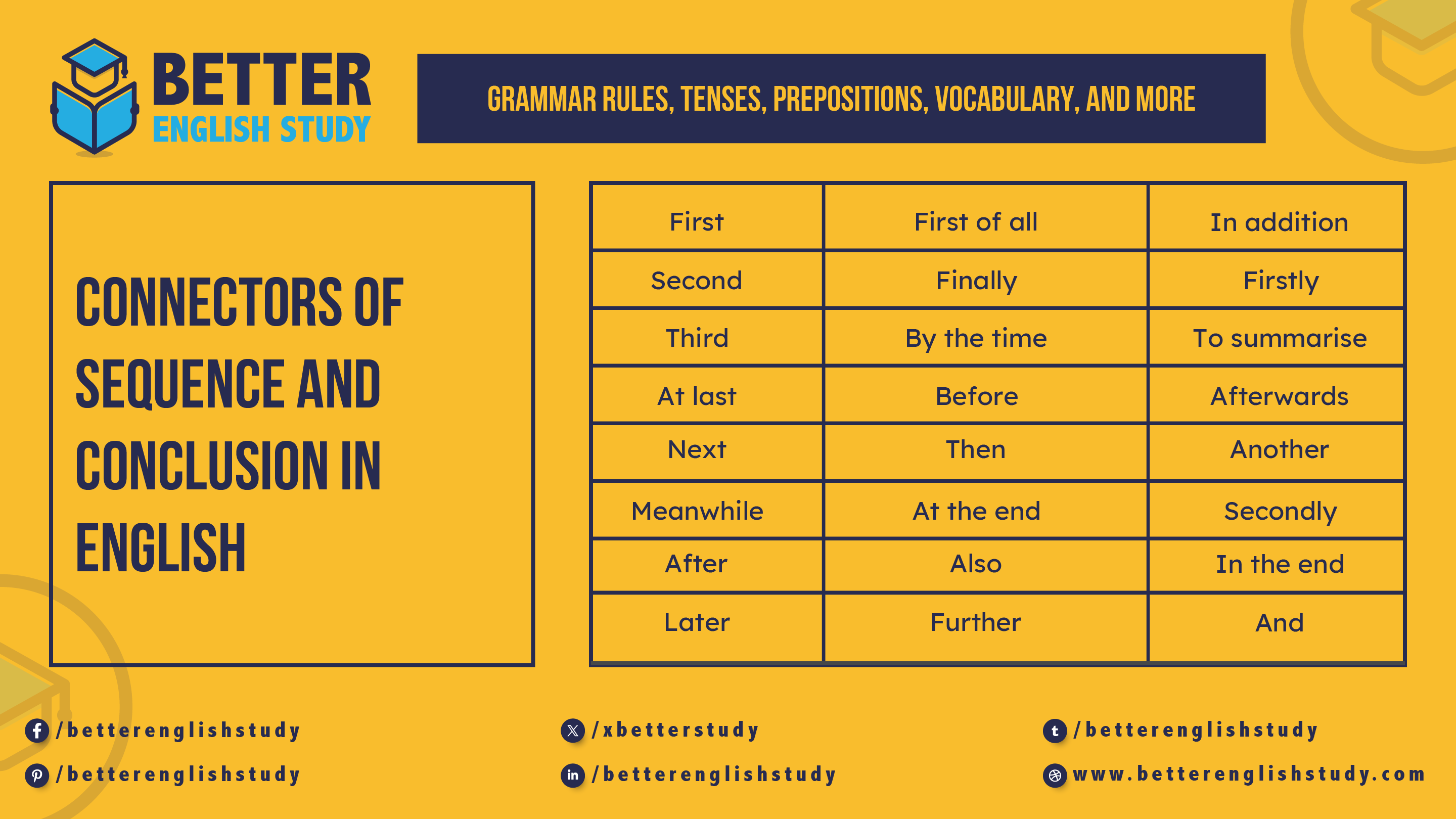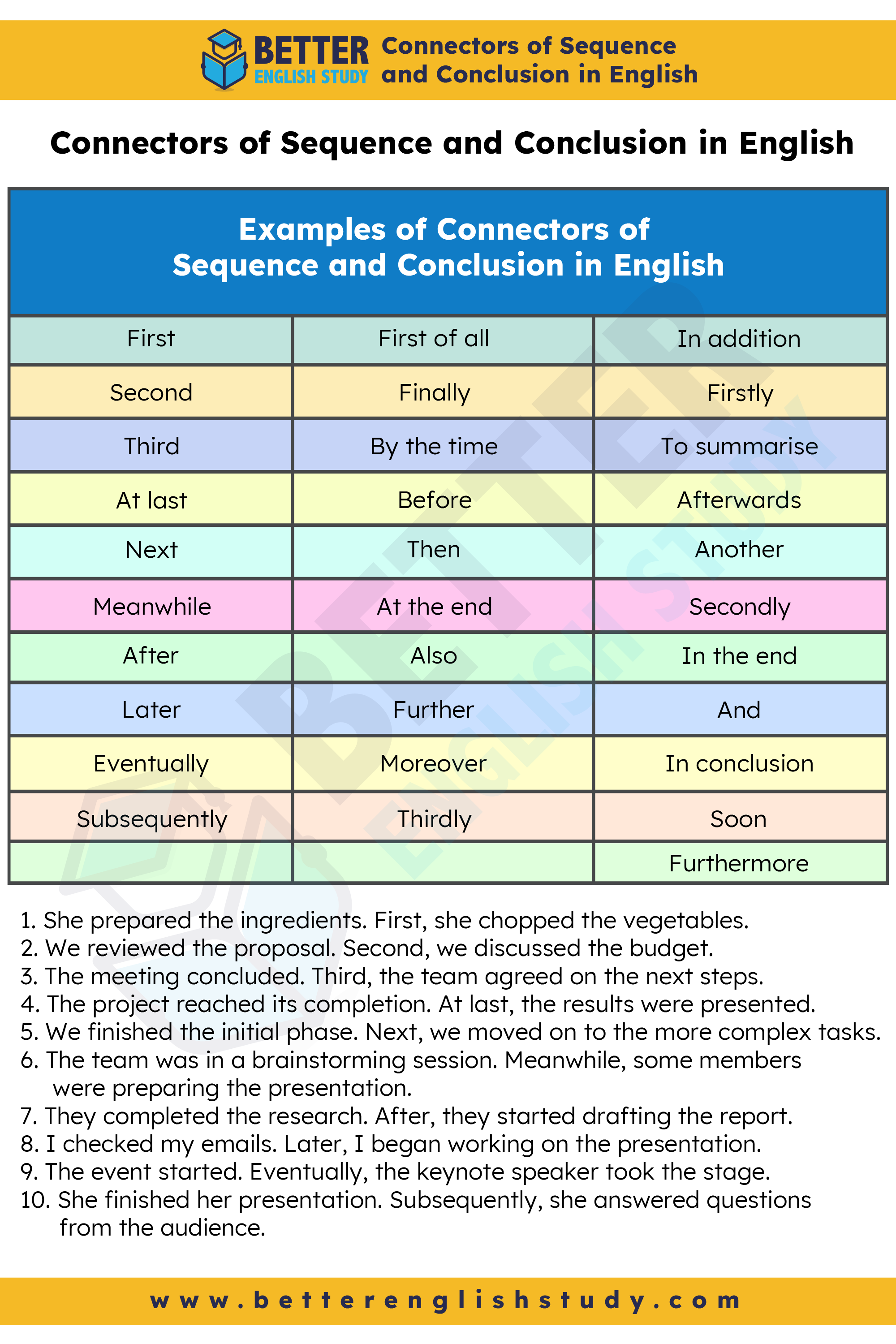
The art of effective communication involves seamlessly guiding your audience through a coherent narrative. Connectors of sequence and conclusion serve as the guiding lights in this journey, leading readers or listeners through a logical flow of events and ideas.
In this exploration, we will unravel the significance of these connectors and provide examples to illustrate their usage in English.
Understanding the Connectors of Sequence and Conclusion
Connectors of sequence and conclusion are linguistic tools that facilitate the smooth transition between different stages of a story or argument. They help build a logical structure, ensuring that ideas are presented in a clear and comprehensible manner. From signaling the beginning of a series to summarizing key points, these connectors play a vital role in shaping the structure of both written and spoken language.
Examples of Connectors of Sequence and Conclusion in English
| First | First of all | In addition |
| Second | Finally | Firstly |
| Third | By the time | To summarise |
| At last | Before | Afterwards |
| Next | Then | Another |
| Meanwhile | At the end | Secondly |
| After | Also | In the end |
| Later | Further | And |
| Eventually | Moreover | In conclusion |
| Subsequently | Thirdly | Soon |
| Furthermore |

Connectors of Sequence and Conclusion Examples in Context
- She prepared the ingredients. First, she chopped the vegetables.
- We reviewed the proposal. Second, we discussed the budget.
- The meeting concluded. Third, the team agreed on the next steps.
- The project reached its completion. At last, the results were presented.
- We finished the initial phase. Next, we moved on to the more complex tasks.
- The team was in a brainstorming session. Meanwhile, some members were preparing the presentation.
- They completed the research. After, they started drafting the report.
- I checked my emails. Later, I began working on the presentation.
- The event started. Eventually, the keynote speaker took the stage.
- She finished her presentation. Subsequently, she answered questions from the audience.
- First of all, let’s outline the main goals of the project.
- The experiment faced challenges. Finally, a breakthrough occurred.
- The meeting ran longer than expected. by the time it concluded, some participants had to leave early.
- The arguments were presented. Before, the audience engaged in a lively discussion.
- We set up the equipment. Then, we tested it for functionality.
- The competition reached its climax. At the end, the winners were announced.
- The report highlighted key findings. Also, it suggested areas for improvement.
- The study recommended additional research. Further, it emphasized the need for collaboration.
- The presentation covered essential aspects. Moreover, it provided insights into future developments.
- We outlined the project’s objectives. Thirdly, we discussed potential challenges.
- The team introduced a new strategy. In addition, they implemented training programs.
- Firstly, let’s examine the historical context of the issue.
- The speaker summarized the main points. To summarise, the key takeaways were reiterated.
- The conference concluded. Afterward, attendees networked during the reception.
- The project faced obstacles. Another unexpected budget constraint arose.
- We revisited the data. Secondly, we refined our analysis.
- The team brainstormed ideas. In the end, a comprehensive plan emerged.
- The details were presented. And, questions from the audience were addressed.
- The seminar covered various topics. In conclusion, the speaker emphasized the need for collective action.
- The product launch is imminent. Soon, marketing efforts will intensify.
- The project faced challenges. Furthermore, it highlighted areas requiring attention.
Understanding and integrating these connectors into your communication enriches your ability to convey information in a logical and organized manner, leading to a more engaging and coherent narrative.
